What is Trauma?
To understand how vicarious trauma impacts mental health care providers, we first need to know some basic information about what trauma is. There are a few definitions but for the sake of this post, we will define trauma as a state in which someone experiences a great aftershock from an event so powerful that it manifests into a variety of symptoms. From a biological perspective trauma often leaves our brain scattering for some stability. Most people who are exposed to trauma will deal with long-term after-effects and will go on to be diagnosed with Post Traumatic Stress Disorder or PTSD for short. Some of the symptoms of PTSD can include but are not limited to: nightmares, hypervigilance (an enhanced state of sensory sensitivity), flashbacks, avoidance (of places, things, people, and other reminders of the traumatic experience). When treating PTSD the most crucial and effective treatment strategy is to help the individual re-develop a sense of safety. This can be difficult in the beginning as most clients who come to therapy don’t initially want to talk about what happened. This is because it means they have to relive the details which are often unsettling.

PTSD is not every clinician’s favorite type of work and it’s not hard to see why. As mental health care providers, we often hear stories that make chills run down our spines. Stories of abuse, natural disasters, death, destruction, and violence to name a few. Our clients often come in carrying years and years of unspoken pain and fear, not really understanding just how powerful the impact of trauma is. We see this a lot in the Latinx community where many are taught to be strong, to minimize, and to rationalize situations as ways of coping. Due to this, many people in the Latinx community live carrying years of traumatic memories following them around like shadows.
It is important to note that trauma is complex and not simply based on one situation. This is where other important terms come into play such as intergenerational trauma and historical trauma. I will only give a brief description here of those terms, but we will be going more into detail on these terms in later posts. Let’s start with intergenerational trauma(also known as transgenerational trauma) which is a response to unresolved trauma that originated from a previous generation and carried on psychologically between family members of trauma survivors. Historical traumacan refer to large scale historical events that impact a collective group. One example would be the Holocaust. Many of the descendants of the survivors of the atrocities in concentration camps also developed symptoms of trauma. This is because the trauma experienced by the initial generation was so powerful that it continued to impact their lives and affect their children (secondary trauma) and so forth. We see historical trauma at extremely higher rates in indigenous communities that are still dealing with the repercussions of colonization. Historical trauma is powerful and there is a substantial amount of research that demonstrates how it continues to impact native communities (higher substance use rates, higher depression rates, and higher suicide rates are reported to affect these native communities).
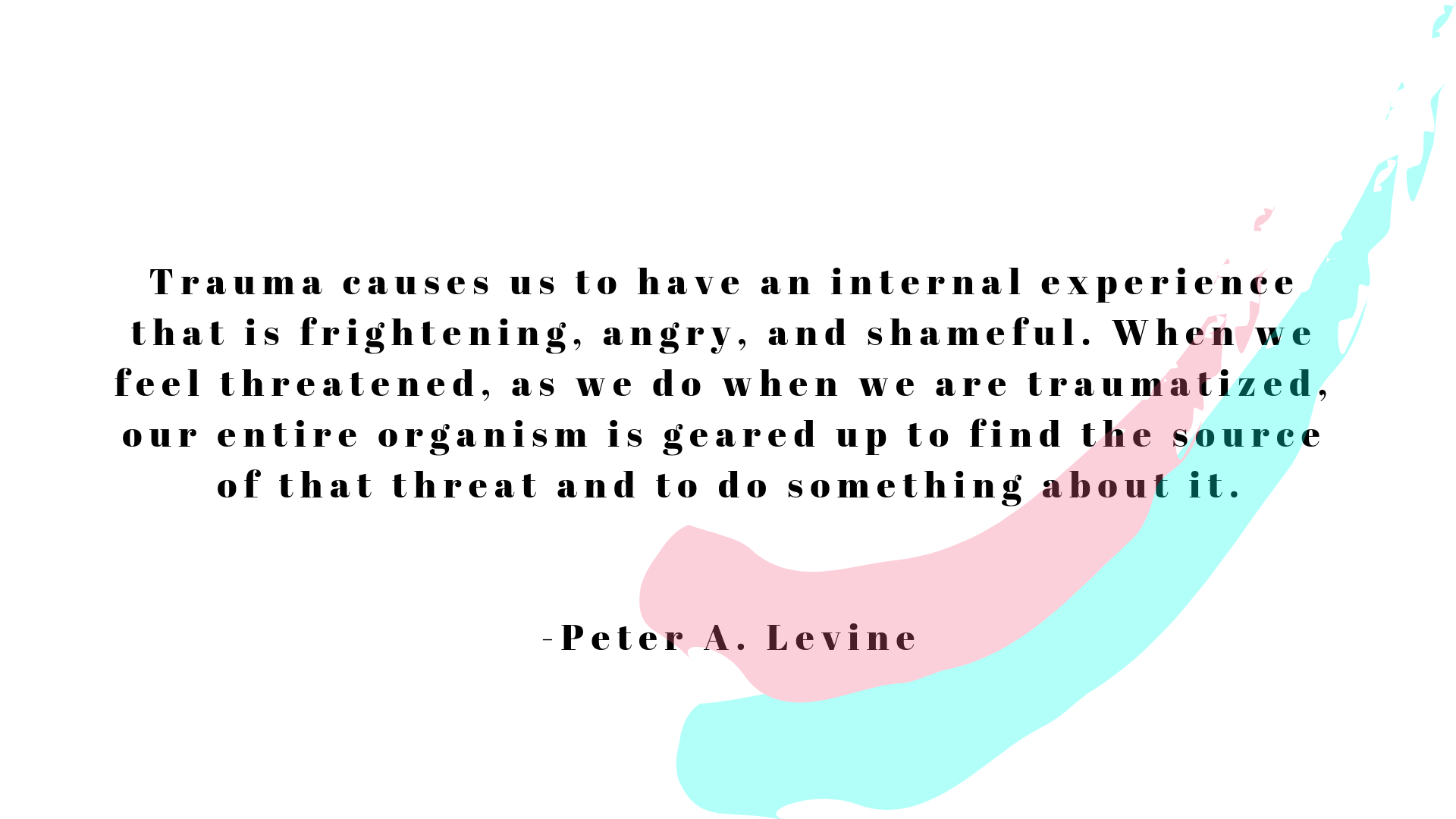
What is Vicarious Trauma?
Vicarious trauma or secondary trauma is a complex reaction that can affect providers in different ways. According to the American Counseling Association, “Vicarious trauma is the emotional residue of exposure that counselors have from working with people as they are hearing their trauma stories and become witnesses to the pain, fear, and terror that trauma survivors have endured”. It is a very real component of the therapeutic relationship and can directly influence mental health providers by causing them to experience the same traumatic stress symptoms that the client is experiencing. Vicarious trauma can happen suddenly, in one session or as a response to an accumulation of exposure to the pain of others (Figley, 1995). To clarify, just because a provider develops vicarious trauma does not mean they are not good therapists. Vicarious trauma is actually a normal part of long-term exposure to working with individuals who experience trauma. Think about it from a medical perspective. If you are working with someone constantly sneezing on you then you are more than likely to catch whatever it is that person has. With trauma topics being so heavy, it makes sense that someone who is continuously exposed to hearing stories would be impacted in some way by the recurring exposure.
How Does Vicarious Trauma Impact Providers?
Vicarious trauma impacts providers the same way it impacts our clients: by affecting our thoughts, feelings, and behaviors. It can cause us to develop similar views of the world as our clients (unsafe, scary, and hopeless). It can even cause us to question our abilities as therapists and how effective we are with clients. Some individuals may even question their beliefs about a higher power, other people, their lives, or their future. It can also impact our relationships and leave us feeling mistrustful of others or reduce our ability to be intimate with our loved ones. If left untreated vicarious trauma can have lasting effects on therapists. It’s important for providers to be aware of their internal world and look out for potential signs of vicarious trauma.
Some signs include (there are many others not listed):
- Nightmares or dark fantasies
- Burnout (feelings of exhaustion about the work)
- Difficulty sleeping
- Constantly worrying about our safety
- Becoming apathetic
- Minimizing the impact of trauma work
- Becoming desensitized to stories of trauma or violence
- Thoughts of hurting ourselves or others
- Difficulty concentrating
- Negative coping (drinking, smoking, or drugs)
- Irritability or anger blowouts
- Diminished self-care
*The questions below can be used as a self-reflection tool to help providers better understand themselves in relation to the work that they are doing directly with clients.
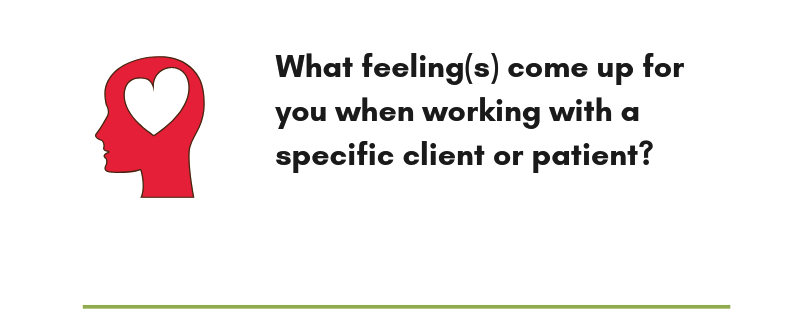
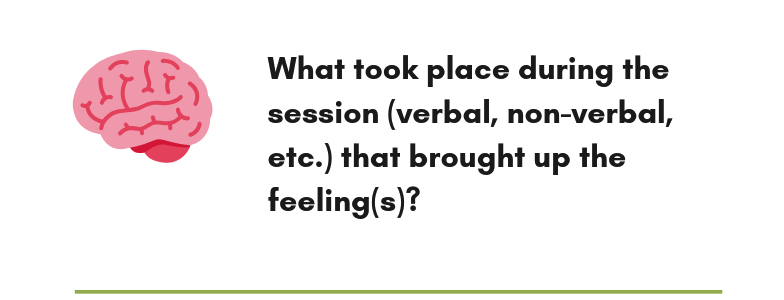
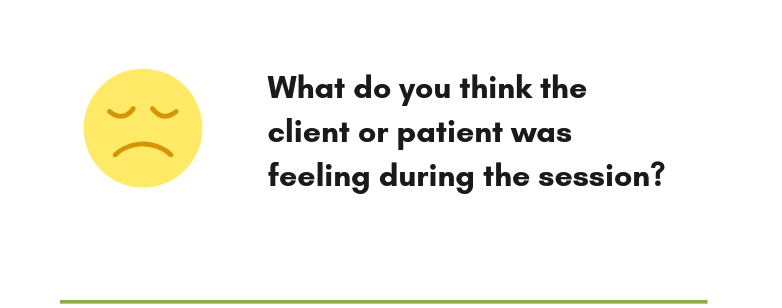
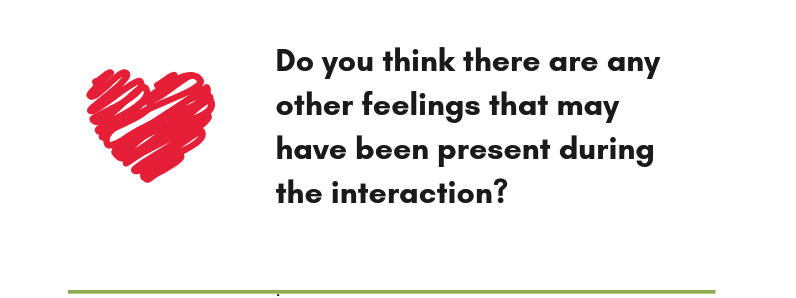
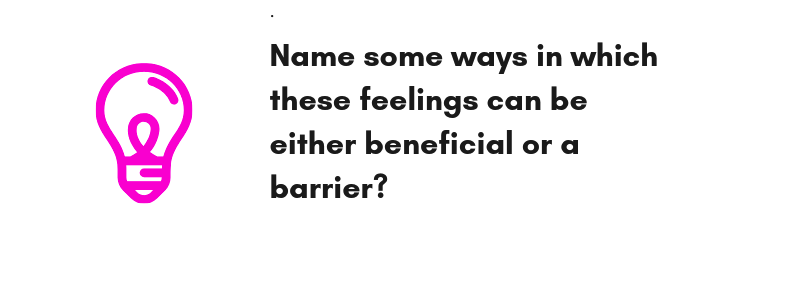
Whether you are aware of it or not, your body is keeping track of the stressors that you are experiencing on a daily basis. One of the best things that you can do for yourself is to take inventory of your experience. Some of the questions you can ask yourself include: what emotions am I feeling at this moment and where am I feeling stress/tension/fatigue in my body. Having an awareness of both the physical and emotional trauma responses, one can begin to create safety plans for both short-term and long-term care. As mental health providers, we are in a position where we are exposed to someone’s past trauma almost on a daily basis. Along with being exposed to what others are experiencing, we also have our own life experiences and trauma that affect how we interact with the world. Sometimes our stress responses are so much a part of our life that we don’t even know that they are happening. Awareness changes difficult situations because it gives us control. Control over our own individual stress response and how we use our experiences, be it positive or negative, to connect and relate to others.
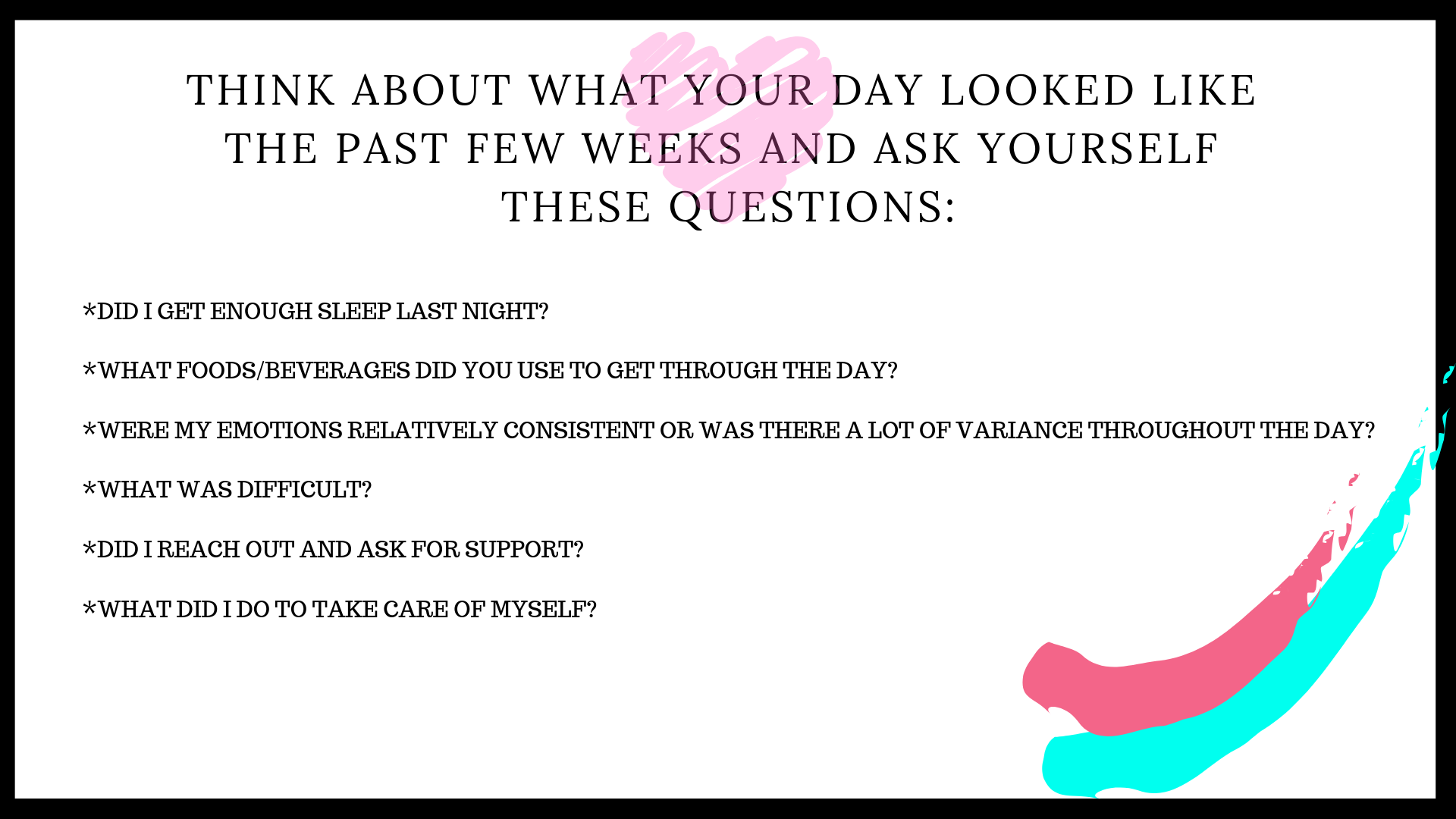
What Can You Do to Work Through Vicarious Trauma?
During the training I attended a few weeks ago, they emphasized the importance of having an accountability partner. Someone who knows you well and isn’t afraid to have difficult conversations with you. Feelings of rage, fear, anger, and frustration can enter our experience at any time. Don’t trust that you can always handle things on your own. Remember that stories and secondhand trauma are going to affect everyone in different ways. If we don’t take care of ourselves, we will have a very limited capacity to support and encourage someone else. It is absolutely crucial for mental health care providers, to have self-awareness and plan time for self-care. Below are some suggestions for possible self-care practices that can be implemented as part of your daily practice.
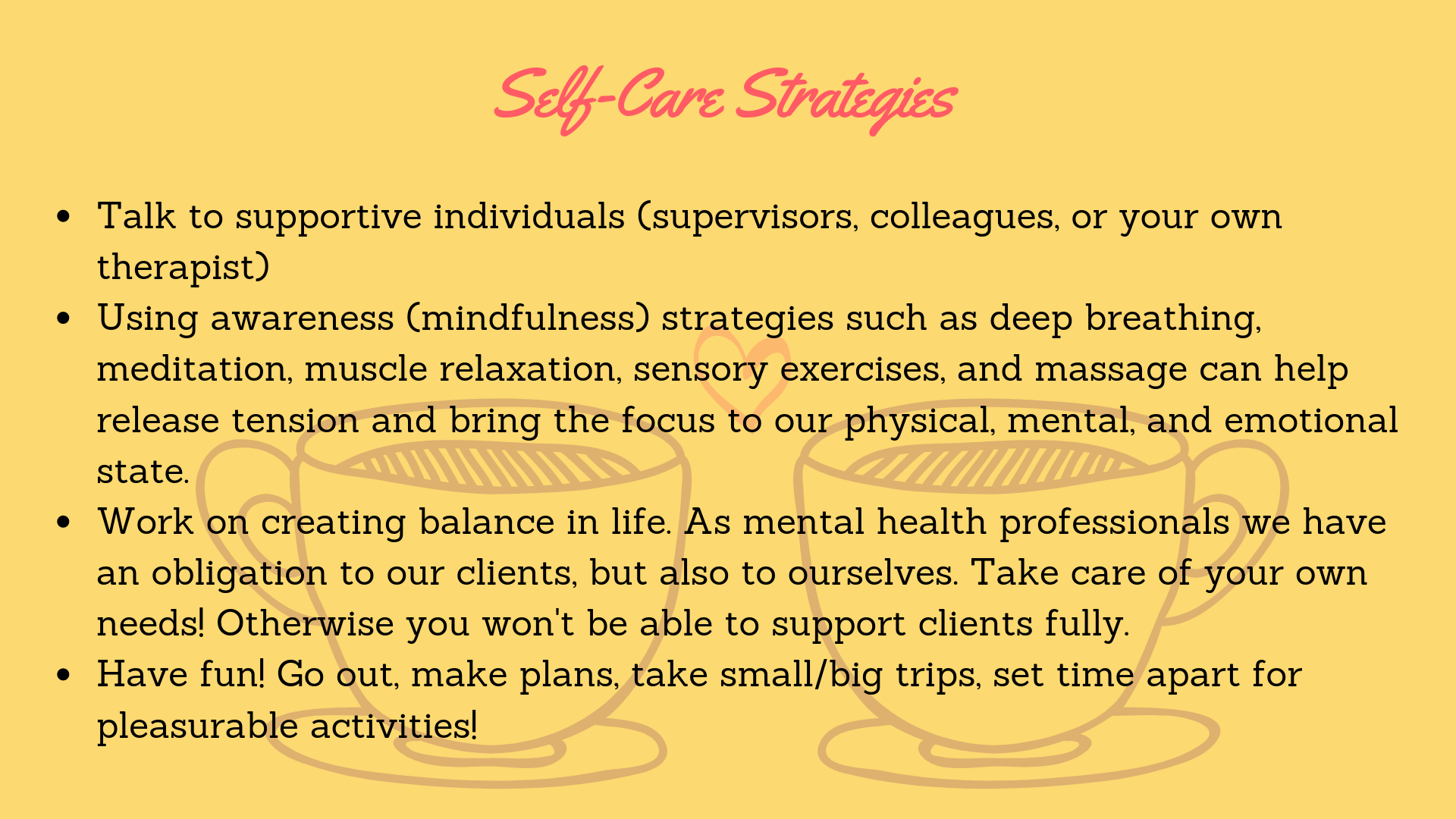
Comment below, what do you do for self-care? Is it something that you do every day or only when needed?
References:
https://www.counseling.org/docs/trauma-disaster/fact-sheet-9—vicarious-trauma.pdf
https://www.beststart.org/resources/howto/pdf/Compassion_14MY01_Final.pdf
Cover Photo by AJ Garcia on Unsplash
Women With Covered Face Photo by Luis Galvez on Unsplash
Download “Feeling Questions” Chart!
Download “Self-Care Questionnaire For Therapists”
Download “Self-Care Strategies”
Luis Cornejo is an LMFT and the Founder of PsychoSocial. Katherine Dominguez is an ACSW and the Co-Founder of PsychoSocial. Their goal is to bring you mental health content and information.
-
Luis & Katherinehttps://psychosocial.media/author/luiskat/
-
Luis & Katherinehttps://psychosocial.media/author/luiskat/
-
Luis & Katherinehttps://psychosocial.media/author/luiskat/April 21, 2019





















One thought on “The Impact of Vicarious Trauma on Mental Health Providers”